In the digital-first enterprise, data isn't just a byproduct of operations; it's the central nervous system. The ability to harness, interpret, and act upon vast streams of information separates market leaders from laggards. A widely cited McKinsey report found that data-driven organizations are 23 times more effective at customer acquisition and six times more likely to retain customers. However, raw data in its native state is a chaotic torrent, residing in disconnected silos—CRM systems, transactional databases, cloud applications, and unstructured data lakes. The strategic imperative is to transform this chaos into coherence. This is the domain of Extract, Transform, and Load (ETL) tools—the architects of the modern data stack.
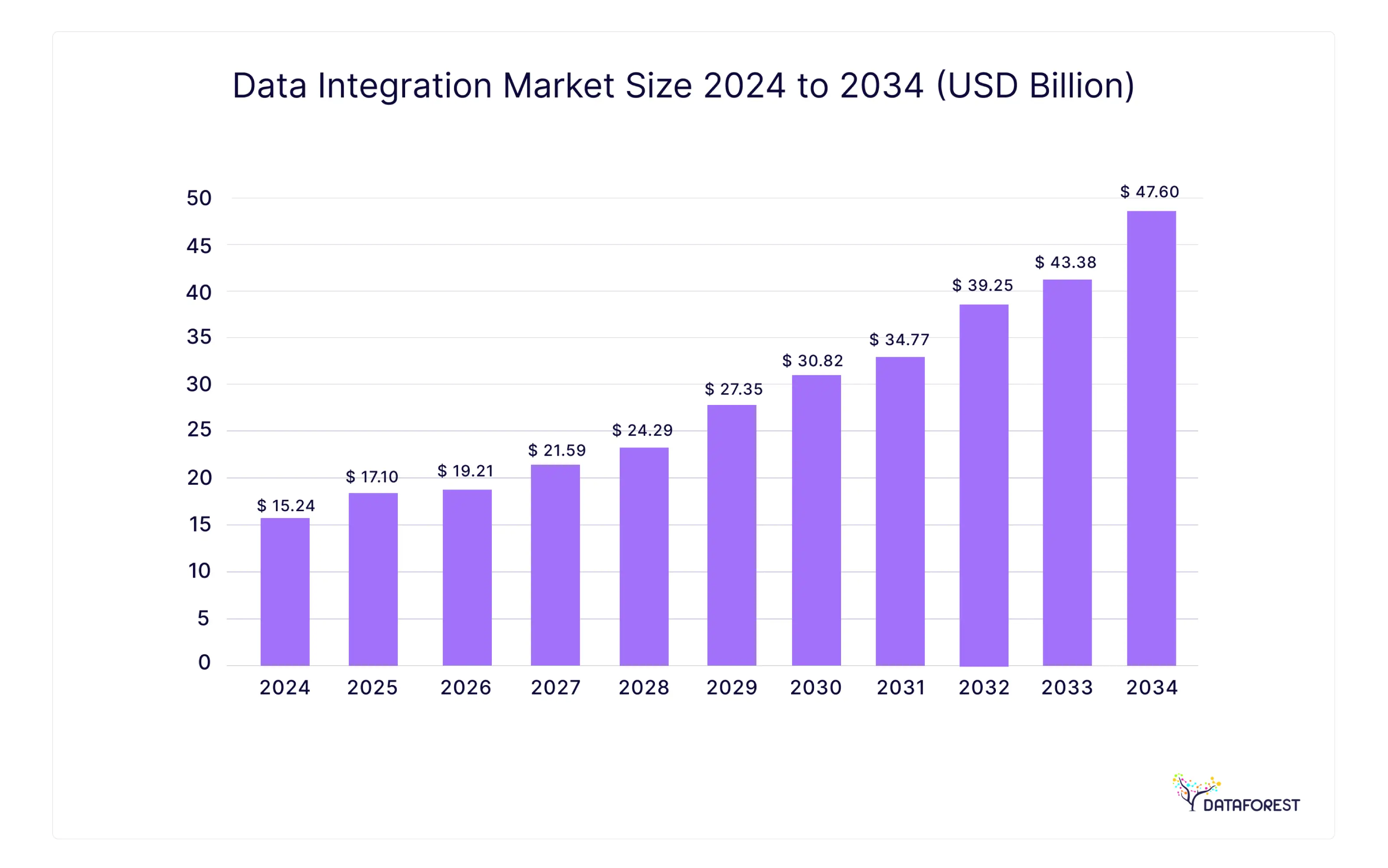
This reality is fueling intense investment in the market for these critical platforms. Projections show the ETL tools market reaching $19.6 billion by 2028, according to MarketsandMarkets research. But that figure represents more than just data movement; it reflects the demand for intelligent, automated data integration that powers everything from predictive analytics to strategic corporate planning. Choosing the right platform is one of the most consequential technology decisions a modern enterprise can make, directly impacting agility and innovation. This guide moves beyond a simple ETL tools list, offering a strategic analysis for executives who understand that data infrastructure is business infrastructure. At DATAFOREST, we've spent years architecting robust data ecosystems, and we recognize that ETL tool selection is the cornerstone of any successful data pipeline strategy.
ETL Tool Selection: Factors for Making the Right Choice
Selecting an ETL tool in 2025 is more than a feature comparison; it's a strategic exercise in aligning technology with core business objectives. The ideal tool must meet today's data demands and be agile enough to scale with future needs, from burgeoning big data repositories to the requirements of generative AI. An improper choice leads to brittle data pipelines, spiraling costs, and a critical lag in time-to-insight.
Today's data landscape is heterogeneous. Your data sources are diverse—ranging from structured SQL Server databases to JSON files and unstructured data. The ETL process must seamlessly connect to all sources, extracting data, transforming it into a consistent format, and loading it into target warehouses like Snowflake or Google BigQuery. Success hinges on understanding both the tools themselves and the architectural patterns they support. Getting the foundation right is everything; our guide to the data integration process lays out these fundamentals in detail.
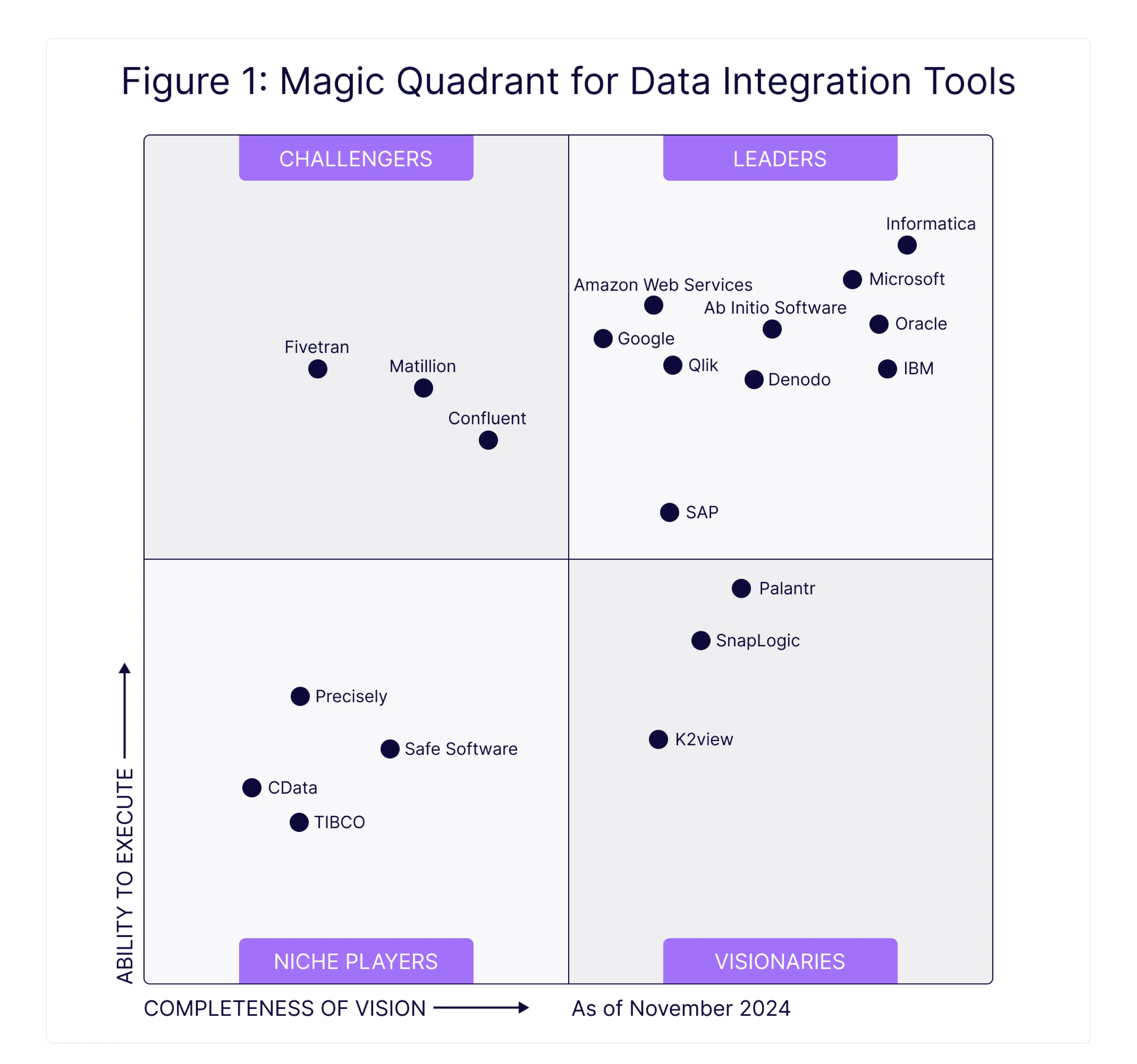
Key ETL Tool-Selection Features
When evaluating the market, executives must scrutinize the key features of each platform, filtering options through a lens of strategic, operational, and financial viability. We've distilled the critical evaluation criteria into the following framework:
Top ETL Tools for Specific Business Needs
There is no single "best" ETL tool for every situation. A nimble travel-tech startup operates under different constraints than a global insurance firm. One might value deployment speed above all, while the other demands uncompromising governance and hybrid cloud support.
Matching Specific ETL Tool Capabilities
- For Real-Time Analytics: Businesses that rely on up-to-the-second data, such as fraud detection or inventory management in retail, should look for tools with first-class support for streaming data sources like Amazon Kinesis. Tools like Google Cloud Dataflow and AWS Glue are designed for this.
- For Large-Scale Batch Processing: Organizations dealing with massive datasets for reporting or ML model training will benefit from platforms built on distributed computing frameworks. Hadoop and Spark-based tools like Azure Data Factory are prime candidates.
- For the Modern Cloud Stack: For companies born in the cloud, tight integration with cloud data warehouses is non-negotiable, making platforms like Stitch, Fivetran, and Integrate.io natural fits.
- For Hybrid and Multi-Cloud Environments: Enterprises managing a mix of on-premises legacy systems and multi-cloud services need a platform to bridge these worlds, which is where tools like Dell Boomi and Talend excel.
Aligning ETL Tool Features with Business Goals
Technical features must serve a business purpose. If your goal is empowering analysts to perform their own data preparation, a user-friendly software tool like Integrate.io or Skyvia is paramount. If your goal is empowering analysts to perform their own data preparation, a user-friendly tool like Integrate.io or Skyvia is paramount. If your goal is building a highly customized and cost-optimized generative AI data infrastructure, a more code-centric platform like AWS Glue may be superior. The objective is always to align the platform's features with your strategic goals—a complex mapping exercise where a partner like DATAFOREST can bring clarity and direction.
The List of ETL Tools
Our 2025 analysis now pivots to specific ETL tools examples, offering an analysis geared toward enterprise decision-makers. The market is dense with powerful options, each with a distinct profile of strengths and strategic trade-offs. To help you navigate this complex field, we've prepared a visual guide that complements our in-depth reviews.
Watch our video for a dynamic overview of the top 15 ETL tools shaping the industry in 2025:
Now, let's proceed with a detailed examination of each platform, starting with the leaders in the integration space.
Dell Boomi AtomSphere
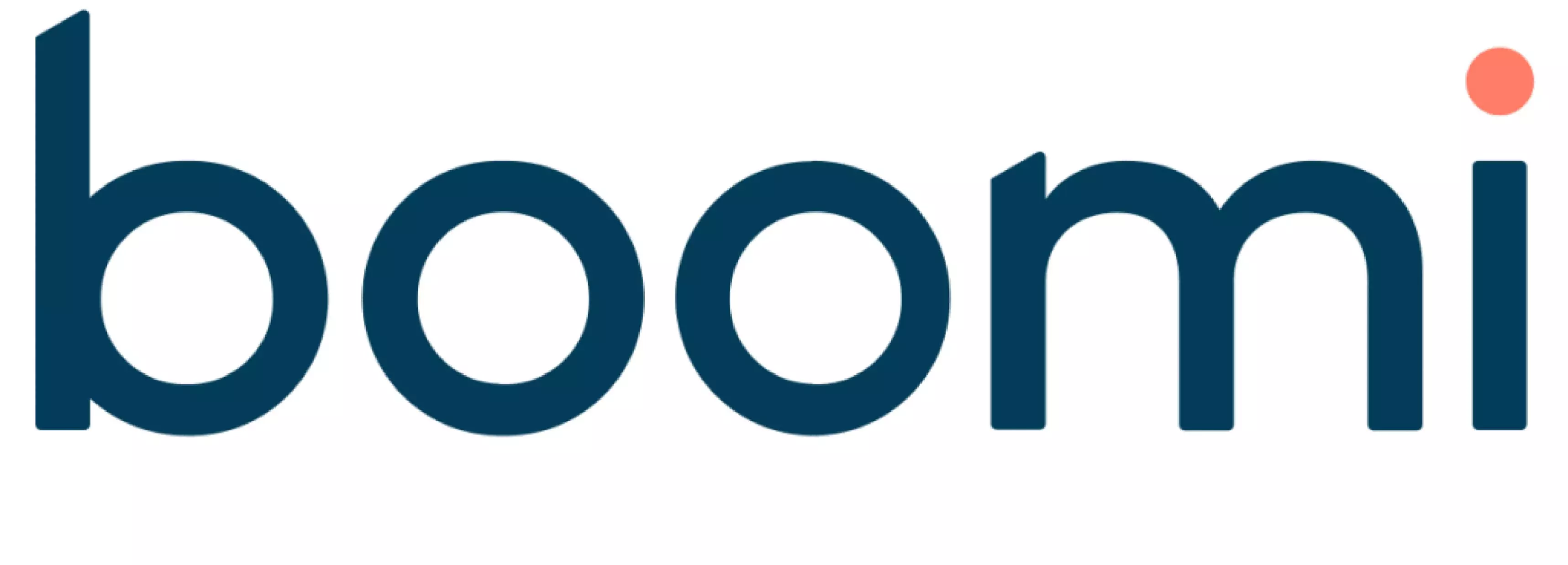
Boomi functions as a cloud-native Integration Platform as a Service (iPaaS) that has expanded beyond ETL to include API management, master data management, and workflow automation. It connects legacy systems to modern SaaS applications.
Advantages
- Unified Platform: Offers a single environment for data integration, API management, and master data, reducing tool sprawl.
- Broad Connectivity: Features a vast library of pre-built connectors, excellent for complex, hybrid environments.
- Low-Code Interface: Its visual, drag-and-drop interface empowers a wider range of users to build integrations.
Challenges
- Pricing Complexity: The consumption-based pricing, based on connectors, can become expensive and hard to predict as usage scales.
- Performance on Large Volumes: May not be as performant for extreme big data batch processing compared to Spark-native tools.
- Steeper Learning Curve: Advanced use cases and custom scripting can be less intuitive than on other platforms.
Pricing
Boomi uses a tiered subscription model based on the number of connectors and features. A free trial and paid plans are available, but enterprise plans require a custom quote.
Airbyte

Airbyte has rapidly emerged as a leading open-source data integration platform, championing a modern, connector-centric approach to ELT. It aims to commoditize data integration by offering a massive, extensible library of connectors that can be run on its open-source platform or via its managed cloud service.
Advantages
- Vast Open-Source Connector Library: Its primary strength is the sheer number of connectors available (over 350+), which are built and maintained by both the Airbyte team and a vibrant open-source community.
- Deployment Flexibility: Users can choose between a free, self-hosted open-source version for maximum control or the managed Airbyte Cloud for convenience and scalability without the operational overhead.
- Ease of Use: Features an intuitive UI that allows for the configuration of data pipelines in minutes, alongside a robust API and Terraform Provider for programmatic control.
Challenges
- Connector Maturity Varies: While the catalog is extensive, the quality and feature-completeness of community-contributed connectors can be inconsistent compared to the certified, core connectors.
- Operational Overhead (Self-Hosted): Managing the open-source version at a large scale requires significant infrastructure and DevOps expertise to ensure reliability and performance.
- Primarily ELT Focus: Airbyte excels at the "Extract" and "Load" stages. Complex transformations are intended to be handled downstream in the data warehouse, typically using a tool like dbt, which may require an additional step in the workflow.
Pricing
The open-source version of Airbyte is completely free, with costs limited to the underlying infrastructure required to run it. Airbyte Cloud operates on a credit-based, pay-as-you-go model, with a generous free tier that makes it highly accessible for small projects and initial testing.
Google Cloud Dataflow
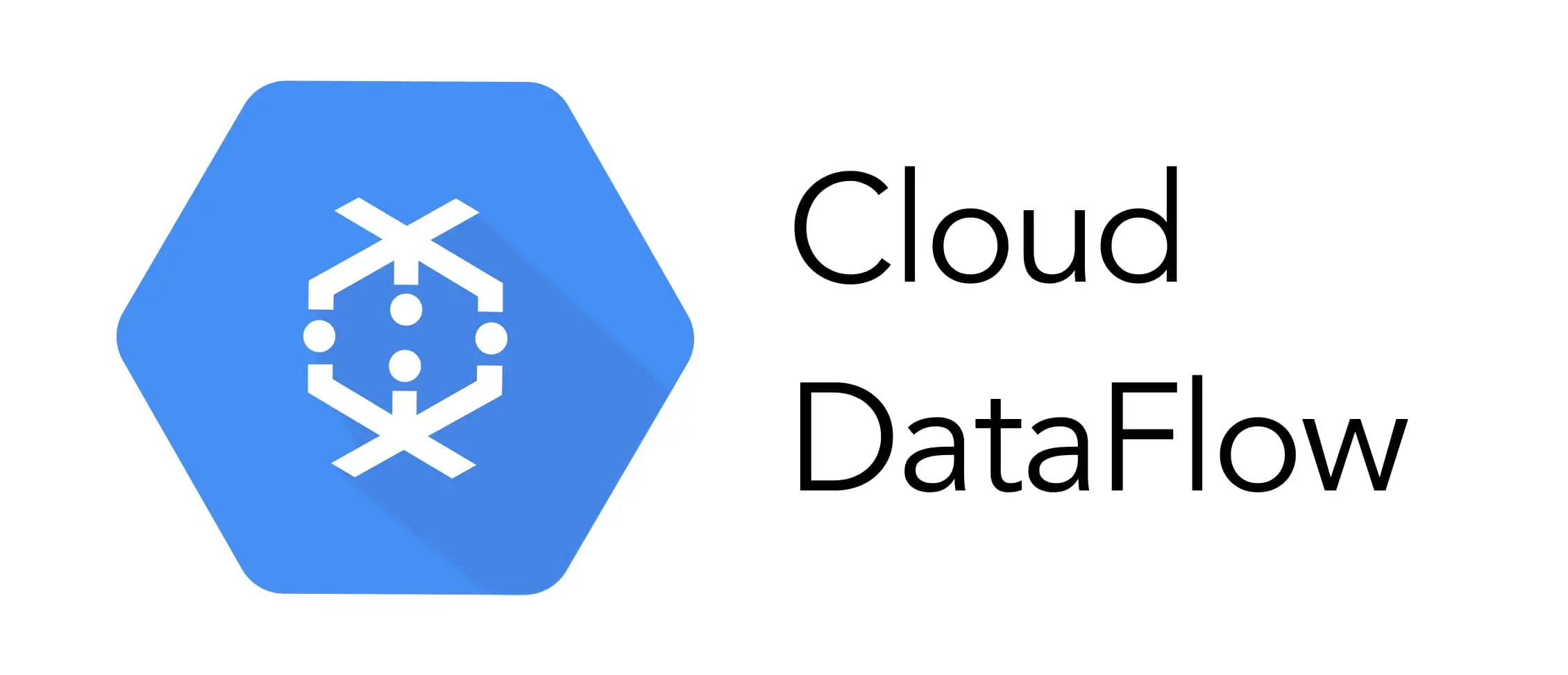
Google Cloud Dataflow is a managed service for executing data processing patterns. Based on Apache Beam, it provides a unified model for both batch and streaming data pipelines.
Advantages
- Unified Stream and Batch Processing: Developers use the same code for real-time and batch jobs, simplifying development.
- Serverless and Automated: Dataflow automates resource provisioning and management, scaling based on workload.
- Powerful AI/ML Integration: Offers seamless integration with Google Cloud services like BigQuery and Vertex AI, ideal for building BI dashboards and predictive analytics workflows.
Challenges
- Vendor Lock-in: While based on open-source Beam, it is optimized for Google Cloud, potentially increasing vendor lock-in.
- Cost Management: The pay-as-you-go model requires careful monitoring to avoid unexpected costs with high-volume streams.
- Learning Curve: Requires a developer mindset and familiarity with Java or Python SDKs.
Pricing
Dataflow has a pay-per-use model based on vCPU, memory, and storage consumed per second. A free tier exists, but enterprise-scale pipelines will incur significant costs.
ETL in Azure Data Factory
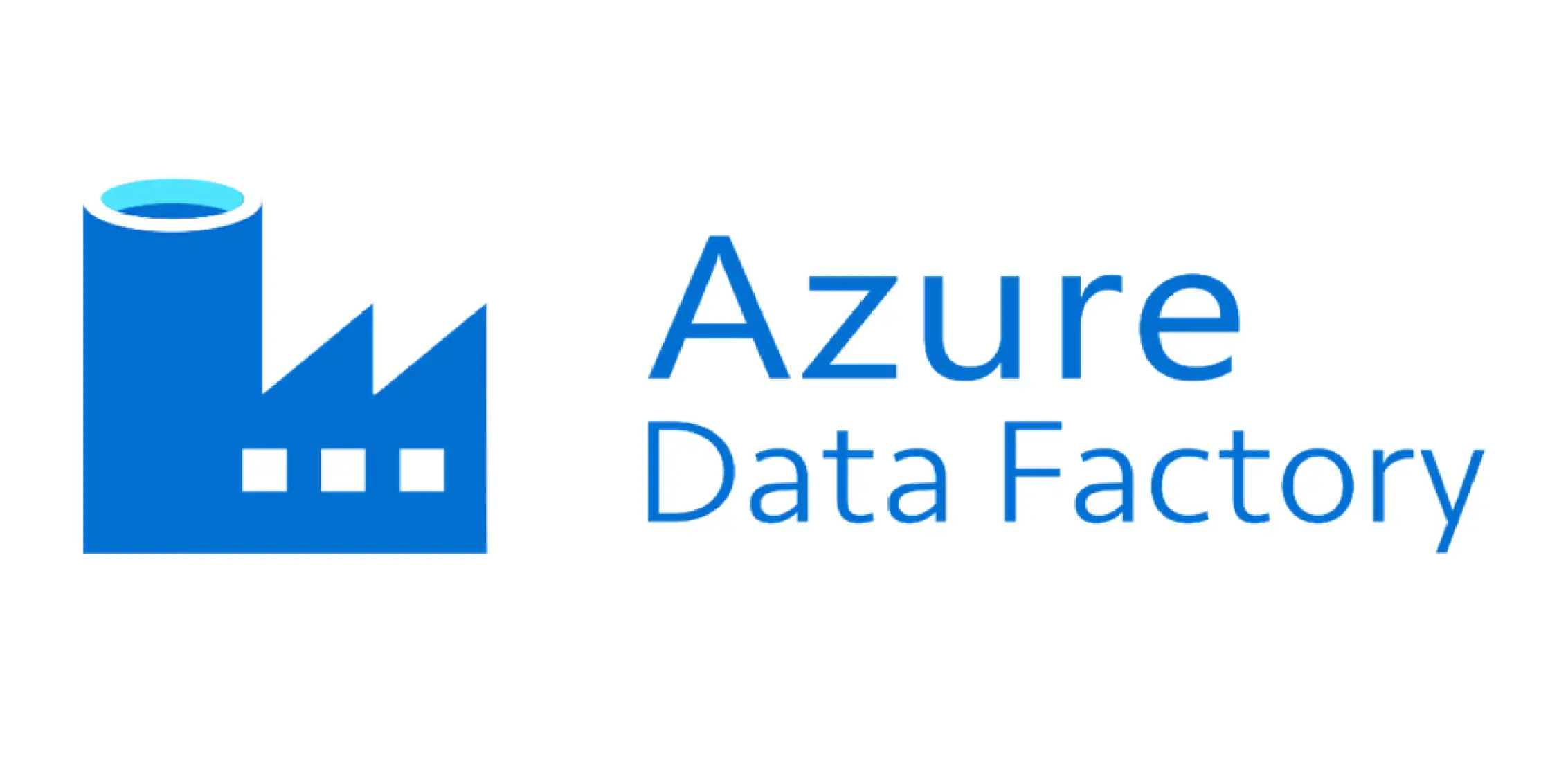
Azure Data Factory (ADF) is Microsoft's cloud-based, serverless data integration service. It orchestrates and automates data movement and transformation at scale within the Azure ecosystem.
Advantages
- Deep Azure Integration: Provides native connectivity to the entire suite of Azure data services, including Synapse Analytics and Blob Storage.
- Hybrid Data Movement: A Self-Hosted Integration Runtime allows secure data movement between on-premises sources and the cloud.
- Visual and Code-Based Options: Offers both a code-free interface and the ability to execute custom code, catering to different skill sets.
Challenges
- Primarily an Orchestrator: Its core strength is orchestration. Complex transformations are often offloaded to services like Azure Databricks.
- Complex UI: The interface can be overwhelming for new users due to its many options.
- Debugging Can Be Clunky: Identifying the root cause of pipeline failures can sometimes be non-intuitive.
Pricing
ADF has a consumption-based model that charges for pipeline orchestration, data flow execution, activity runs, and data movement. A free tier is offered.
Portable

Portable is a newer ETL tool focused on long-tail connectors. It provides connectors for niche SaaS applications and APIs that are often unsupported by larger platforms.
Advantages
- Vast Connector Library: Specializes in building and maintaining connectors for less common data sources.
- Predictable Pricing: Most plans offer unlimited connectors and volume for a flat fee.
- Fully Managed Service: The Portable team handles connector development and maintenance, freeing up engineering resources.
Challenges
- Limited Transformation: Primarily an "EL" (Extract, Load) tool. Transformations are handled downstream in the data warehouse.
- No Database Sources: Focuses exclusively on SaaS and API sources, not traditional databases like Oracle or PostgreSQL.
- Newer Player: Lacks the long track record and enterprise governance features of established players.
Pricing
Portable offers flat-rate pricing. A free plan with manual refreshes is available. Paid plans are based on support and refresh frequency.
Stitch

Stitch Data is a cloud-first, open-source ELT platform prioritizing simplicity. Acquired by Talend, it's a streamlined offering for data analysts.
Advantages
- Ease of Use: An intuitive web interface allows users to set up data pipelines in minutes without code.
- Transparent Pricing: A straightforward pricing model based on rows processed per month.
- Singer Protocol: Built on the open-source Singer standard, allowing the community to contribute new connectors.
Challenges
- Primarily ELT, not ETL: Focuses on loading raw data, leaving transformations to be handled post-load.
- Limited Enterprise Features: Lacks the advanced governance, security, and complex orchestration features required by a business of type enterprise.
- Cost at Scale: Row-based pricing can escalate quickly with high data volumes.
Pricing
Stitch has a tiered model based on millions of rows replicated per month. A 14-day free trial is offered; paid plans scale with usage.
AWS Data Pipeline
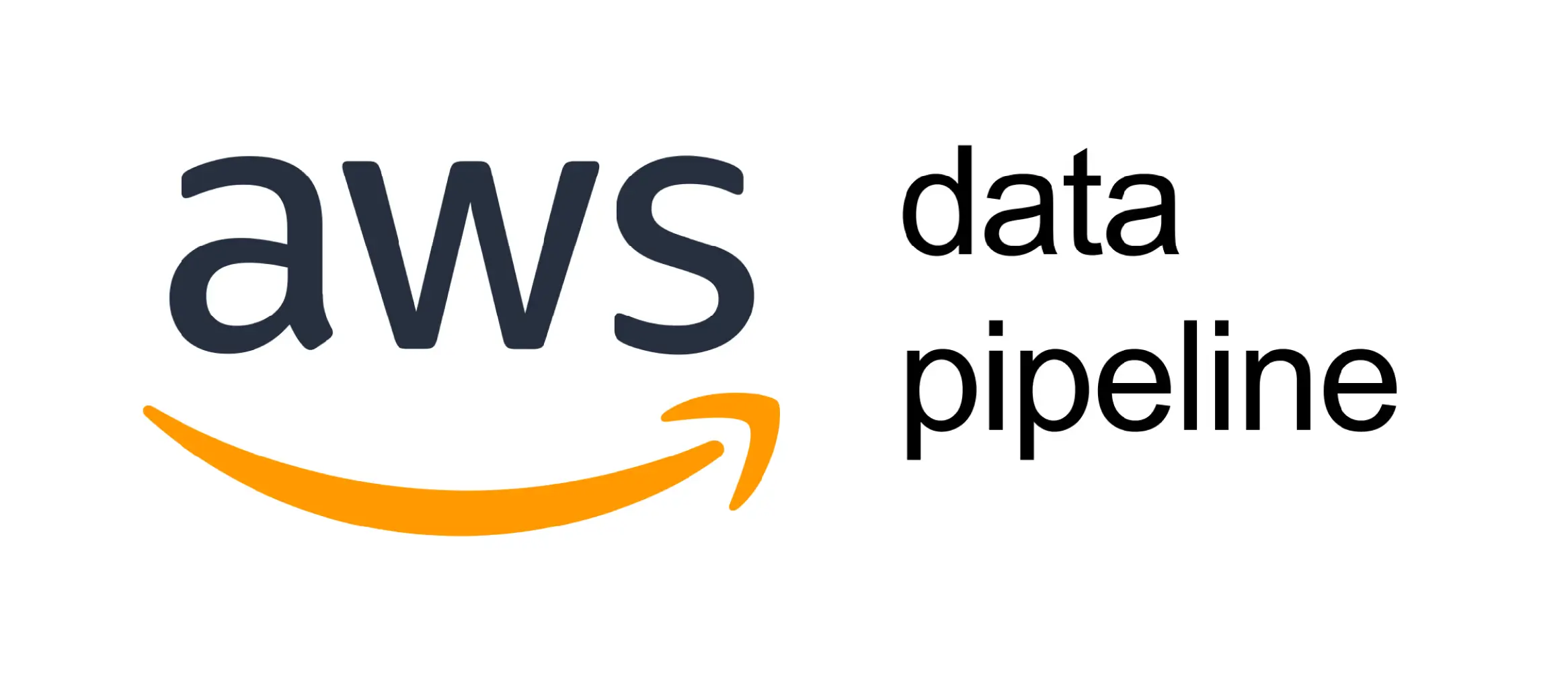
AWS Data Pipeline is a web service for processing and moving data between AWS services and on-premises sources. It's an older AWS data orchestration service.
Advantages
- Reliable Orchestration: Provides a straightforward way to schedule recurring data movement and processing tasks.
- Cost-Effective: Its pricing can be very inexpensive for low-frequency activities.
- Integrates with On-Premise Data: Can be configured to access data stored within a corporate firewall.
Challenges
- Largely Superseded: For most new ETL cases on AWS, AWS Glue is the more modern service, as Data Pipeline lacks a data catalog and serverless scaling.
- Rigid Interface: The pipeline definition process is considered clunky compared to modern alternatives like Airflow.
- Limited Transformations: It's an orchestrator and relies on other services (like Amazon EMR) for data transformation.
Pricing
AWS Data Pipeline has a pay-as-you-go model with a free tier, priced on activity frequency and execution location.
AWS Glue

As a fully managed, serverless ETL service, AWS Glue is a lynchpin in many AWS data architectures, designed to automate the work of data discovery, prep, and integration.
Advantages
- Serverless Architecture: No servers to manage. Glue automatically handles and scales the underlying infrastructure.
- Integrated Data Catalog: Its crawlers automatically scan data sources, identify schemas, and populate a central metadata repository.
- Spark and Python-based: ETL jobs run on a managed Apache Spark or Python shell environment, providing power and flexibility.
Challenges
- Cold Start Latency: Serverless jobs can sometimes experience a "cold start" delay, which may be an issue for time-sensitive workloads.
- Complex for Beginners: Unlocking its full potential requires coding in Python/Scala and an understanding of Spark.
- Unpredictable Cost: The DPU-hour (Data Processing Unit) pricing requires careful job optimization to control costs.
Pricing
AWS Glue charges per DPU-hour consumed, with separate charges for the Data Catalog and crawlers.
Oracle Data Integrator (ODI)

Oracle Data Integrator is Oracle's strategic data integration platform. Its ELT architecture leverages the target database for transformations.
Advantages
- High-Performance ELT: Pushes data transformations down to the target database, using native SQL for high-speed processing.
- Heterogeneous System Support: Provides excellent support for a wide range of non-Oracle databases and big data technologies.
- Knowledge Modules: Its modular design allows for extensibility and applies best practices for specific source/target combinations.
Challenges
- Complex and Expensive: ODI is a powerful tool with a steep learning curve and a high price tag, suitable for large organizations in the Oracle ecosystem.
- On-Premise Focus: Its architecture is rooted in on-premise deployments, though a cloud service exists.
- Declining Mindshare: Often seen as a legacy tool compared to more agile, cloud-first alternatives.
Pricing
Oracle Data Integrator is licensed per processor. Pricing is quote-based for enterprise deployments.
IBM DataStage
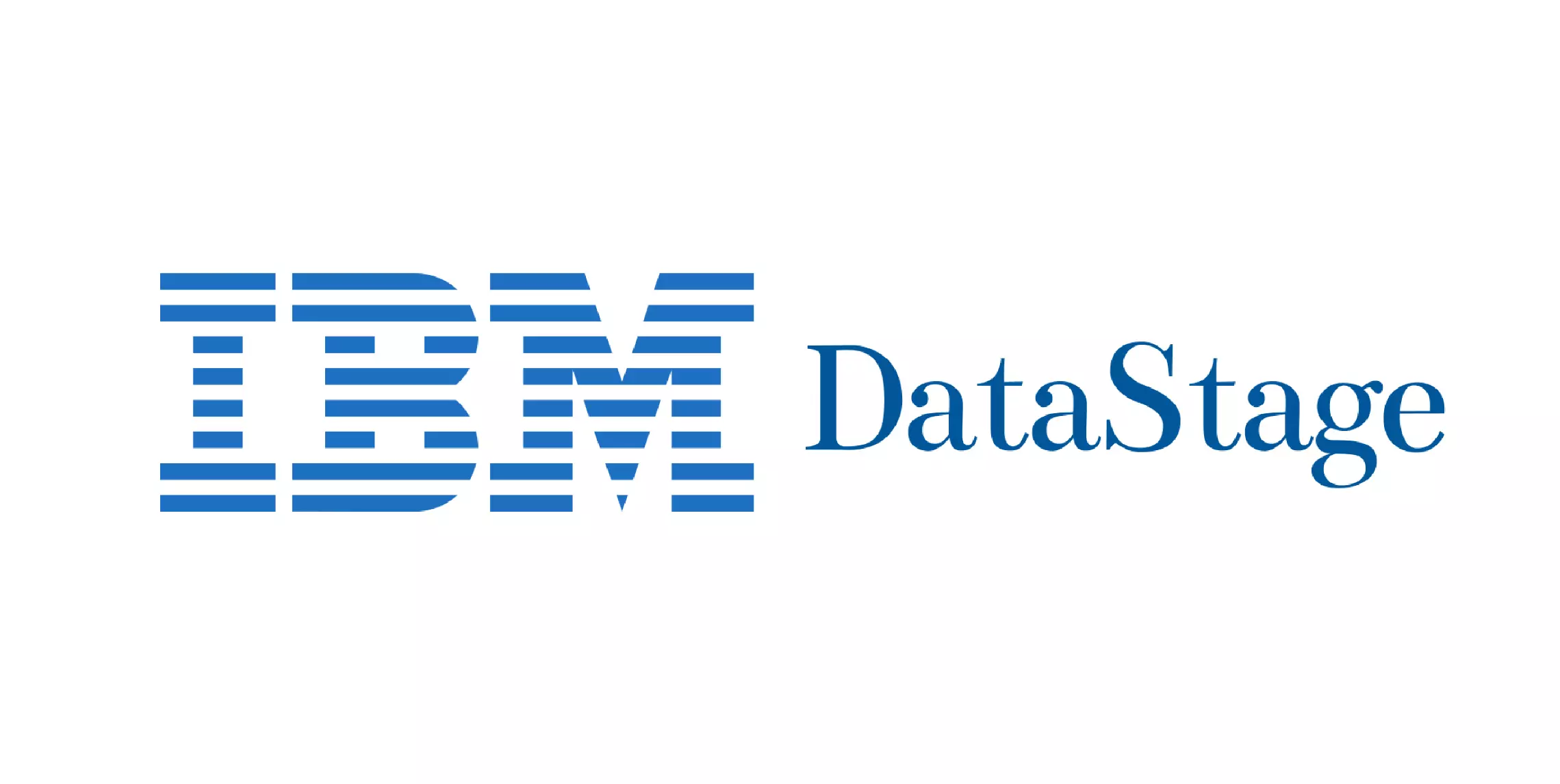
IBM DataStage (part of Cloud Pak for Data) is a veteran ETL tool known for its power in large-scale enterprise data integration. It excels at complex transformations and parallel processing for massive data volumes.
Advantages
- Powerful Parallel Processing Engine: Its core strength is a parallel engine that can be scaled to deliver high performance for big data.
- Rich Transformation Library: Offers a vast set of pre-built stages that can handle very complex business logic.
- Mainframe and Legacy Connectivity: Provides best-in-class connectivity to IBM Z mainframes and other legacy data sources common in banking and insurance.
Challenges
- High Cost and Complexity: DataStage is a premium product with significant licensing and hardware costs, requiring highly skilled developers.
- Legacy User Interface: Modern versions have improved, but the UI can feel dated compared to cloud tools.
- Vendor Lock-in: Deep integration can create significant dependencies on the IBM ecosystem.
Pricing
IBM DataStage is available through IBM Cloud Pak for Data via a Virtual Processor Core (VPC) model. Pricing requires engaging with IBM sales.
Talend Open Studio

Talend Open Studio is a popular open-source ETL tool. Its graphical, Eclipse-based environment builds data integration jobs using code generation.
Advantages
- Free and Open-Source: The core tool is free, making it accessible to developers and small businesses.
- Vast Component Library: Offers over 1,000 pre-built connectors and components to build complex pipelines.
- Code Generation: Generates native Java code that can be exported and run on any machine with a JVM.
Challenges
- Commercial Version Up-sell: Advanced features like collaboration and scheduling are reserved for the paid version, Talend Data Fabric.
- Resource Intensive: The Eclipse-based IDE can be slow and consume significant memory.
- Community Support Model: Support for the free version relies on community forums, which may be insufficient for enterprise issues.
Pricing
Talend Open Studio is free. The commercial platform, Talend Data Fabric, is subscription-based, with pricing upon request.
Skyvia
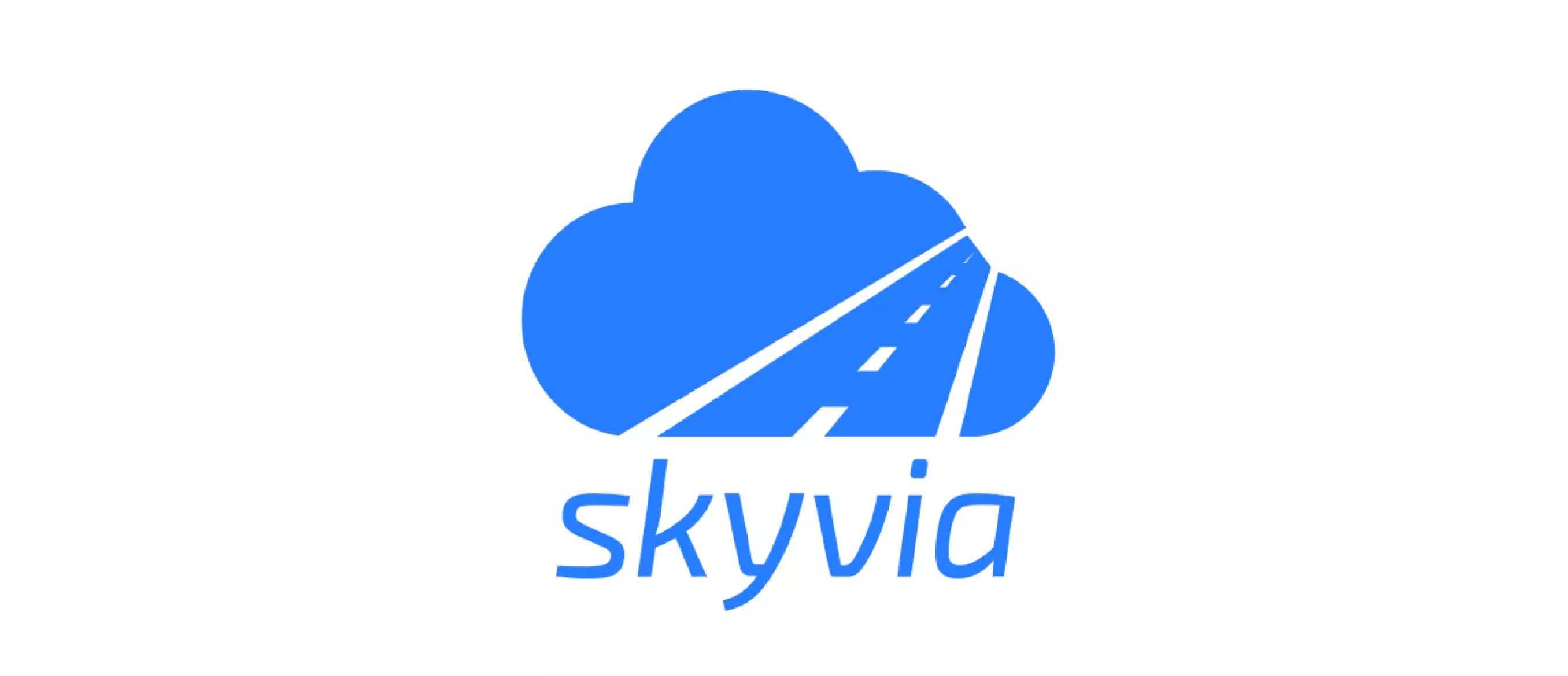
Skyvia is a 100% cloud data platform offering ETL, ELT, backup, and API management. It targets business analysts and IT professionals needing quick, no-code data solutions.
Advantages
- No-Code Simplicity: The platform is wizard-driven, allowing users to set up integrations without coding.
- Predictable, Freemium Pricing: Offers a generous free tier and clear, record-based pricing for paid plans.
- All-in-One Platform: Combines ETL, backup, and data access in a single subscription.
Challenges
- Limited Customization: The no-code approach offers less flexibility for highly complex transformation logic.
- Performance on Very Large Datasets: May not match the raw performance of distributed tools for petabyte-scale jobs.
- Connector Focus: Primarily focused on popular cloud applications and databases.
Pricing
Skyvia has a freemium model. The free plan includes 10,000 records/month. Paid plans are tiered based on record count and features.
Matillion
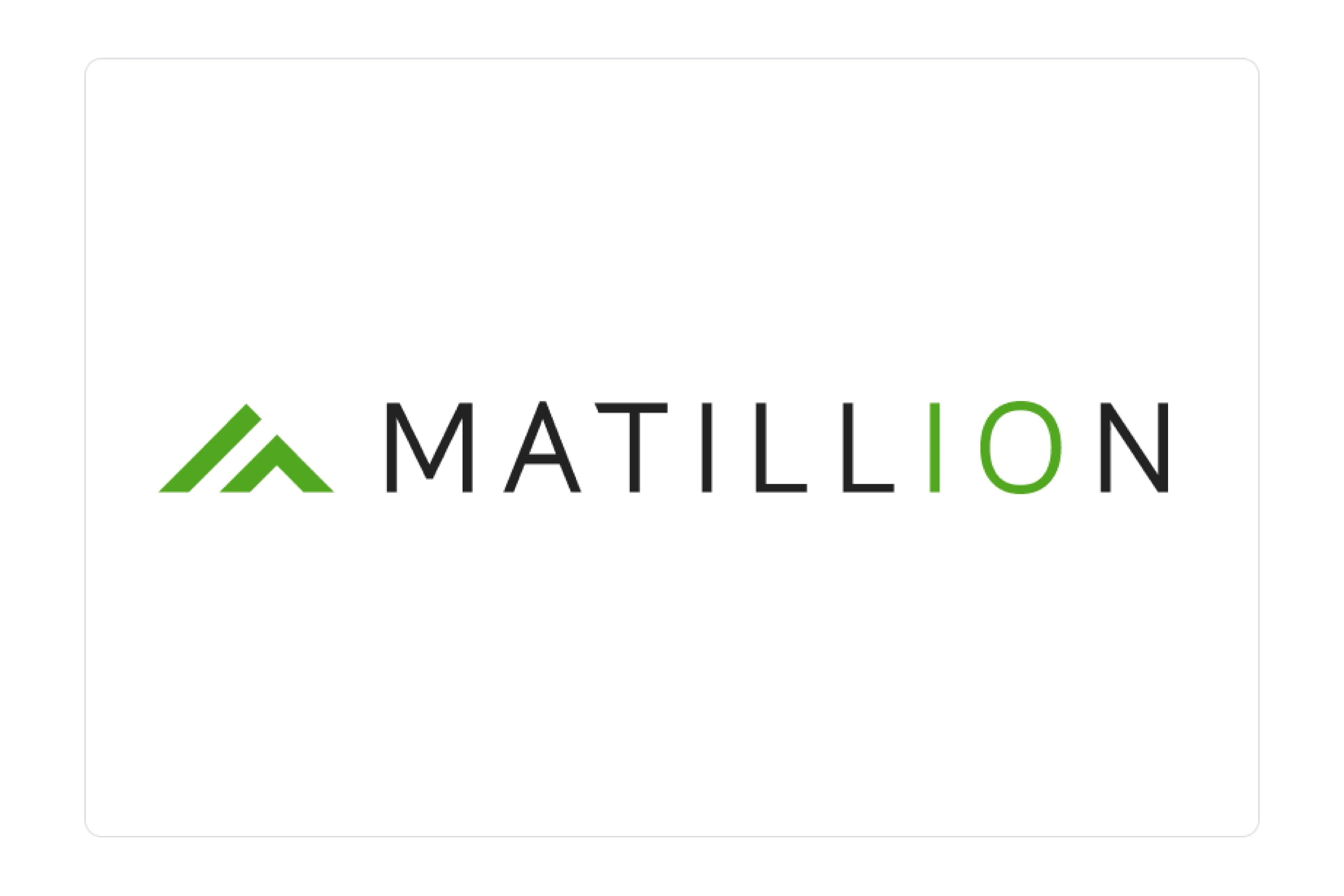
Matillion is a cloud-native ELT platform built specifically to leverage the power of modern cloud data warehouses like Snowflake, Amazon Redshift, Google BigQuery, and Databricks. It uses a "push-down" ELT approach, transforming data directly within the target warehouse for maximum efficiency.
Advantages
- Optimized for Cloud Warehouses: Its architecture is designed to get the most performance out of your cloud data platform by converting its graphical workflows into native SQL for execution.
- Intuitive, Low-Code Interface: Features a polished, browser-based UI that empowers a broad range of users to visually design, schedule, and monitor complex data transformation pipelines.
- Predictable Pricing: The instance-based pricing model (charging per hour based on VM size) is transparent and easy to forecast, avoiding the potential for unexpected costs common with consumption-based models.
Challenges
- Tightly Coupled to Warehouse: The platform is licensed per data warehouse. If your organization uses both Snowflake and BigQuery, for example, you would need separate Matillion instances.
- Requires Infrastructure Management: Unlike fully serverless tools, the customer is responsible for managing the cloud virtual machine that Matillion runs on, adding some operational overhead.
- Primarily ELT, Not ETL: Its strength is in post-load transformation. Use cases that require heavy in-flight transformations before loading data into the warehouse are not a natural fit for its architecture.
Pricing
Matillion offers straightforward, hourly pricing through the AWS, Azure, and Google Cloud marketplaces, with costs determined by the size of the underlying virtual machine instance. A 14-day free trial is available.
Fivetran
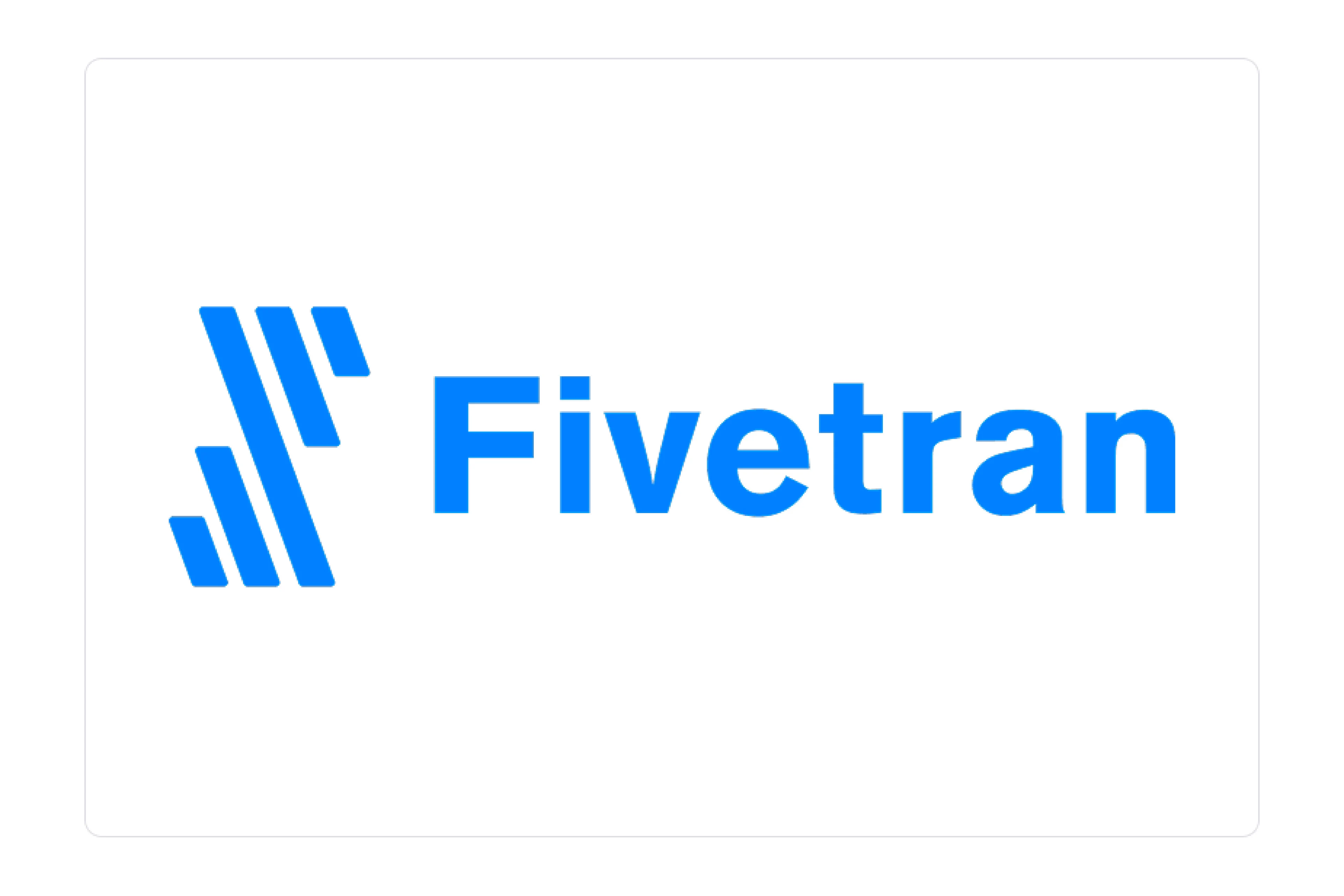
Fivetran is a dominant force in the modern data stack, championing the ELT paradigm. It provides fully managed, zero-maintenance data pipelines that are easy to set up.
Advantages
- Automated and Maintenance-Free: Fivetran handles schema migrations, API changes, and failures automatically.
- Extensive Connector Library: Offers a massive and growing list of reliable, pre-engineered connectors.
- Transformation Integration: Seamlessly integrates with dbt (Data Build Tool) for handling transformations within the data warehouse.
Challenges
- Strictly ELT: It does not perform transformations in-flight, which may not suit all use cases.
- Consumption-Based Pricing: The model is based on "Monthly Active Rows" (MAR), which can be difficult to predict.
- "Black Box" Nature: Its automated nature means less control and visibility compared to tools like AWS Glue.
Pricing
Fivetran uses a consumption-based pricing model. A 14-day free trial paid plan is available.
Integrate.io

Integrate.io's cloud platform delivers potent ETL and ELT functions through a notably straightforward low-code interface.
Advantages
- User-Friendly Interface: Its intuitive, visual UI is a key differentiator, making it one of the most approachable enterprise-grade ETL tools to use.
- Flexible ETL and ELT: The platform is also flexible, natively supporting both in-pipeline transformations (the classic ETL model) and push-down transformations (ELT).
- Excellent Customer Support: Widely praised for its responsive and knowledgeable support team.
Challenges
- Connector-Based Pricing: The model, which charges per connector, can become expensive for organizations with many sources.
- Fewer Connectors: Its library, while robust, may not be as extensive as giants like Fivetran.
- Performance for Extreme Scale: May not be the first choice for hyper-scale jobs compared to Spark-based platforms.
Pricing
Integrate.io uses a flat-rate, per-connector pricing model, which provides predictable costs. A 14-day free trial is offered.
How DATAFOREST Uses Top ETL Technologies to Automate the Full Data Journey
Choosing a tool is just the start. The real business value comes from expert implementation—building data pipelines that are resilient, scalable, and cost-efficient. At DATAFOREST, our focus is on constructing complete data solutions that produce tangible results, whether that’s through warehouse automation or sophisticated advanced planning systems.
Our approach begins by analyzing your specific business context to select and integrate the optimal technologies, ensuring your data infrastructure becomes a competitive advantage. The success of our clients, such as our work in streamlining data analytics, demonstrates the power of this tailored approach.
Technologies We Work With (Reviewed in This Article)
Our philosophy is to use the right tool for the right job, frequently architecting a hybrid technology stack to achieve the best possible performance. Our hands-on experience includes many of the leading platforms reviewed here:
Technologies we use that are also featured in this review include:
- AWS Glue: For building scalable, serverless ETL workflows.
- Apache Hadoop: For architecting and optimizing massive big data solutions, often with Amazon EMR.
- Google BigQuery: For building lightning-fast, real-time analytics platforms.
- Airflow / Cloud Composer: For orchestrating complex and reliable data pipelines.
- Amazon Kinesis: For engineering real-time data streaming solutions.
- Snowflake: For modernizing data warehousing with its unique cloud-native architecture.
- MongoDB: For flexible, document-oriented data management.
- Cassandra: For high-availability, distributed data infrastructure.
Charting Your Course for Data-Driven Leadership
Navigating the ETL tools market can feel overwhelming. The path from scattered data points to clear, actionable intelligence is a complex one, filled with high-stakes decisions on architecture and future-proofing. The platforms we've detailed represent the top tier of what's available in 2025, each with distinct advantages for different business scenarios. Choosing correctly demands clarity on your business goals and a cohesive technology strategy.
But always keep in mind that the tool is just one variable. The real transformation happens when expert implementation creates the intelligent, automated data pipelines that your business will innovate on for years to come.
Ready to make your data your most powerful asset? Contact the experts at DATAFOREST for a frank discussion about your data integration and ETL strategy.
Frequently Asked Questions (FAQ)
How do AI and automation enhance ETL workflows today?
They are fundamentally reshaping the landscape through "augmented data management." AI-driven automation now handles critical, repetitive tasks like schema detection, metadata discovery, and data quality anomaly flagging. Advanced algorithms can also dynamically optimize pipeline performance by reallocating resources or predicting failures before they occur. This evolution is foundational for building the responsive generative AI data infrastructure modern enterprises require.
Can low-code or no-code ETL tools scale for enterprise-level needs?
Absolutely. Leading platforms like Integrate.io and Dell Boomi are built on highly scalable cloud infrastructure and are fully capable of processing enterprise-level data volumes. Their primary business advantage is accelerating development and empowering more users, making organizations more agile. However, for hyper-specific, performance-critical workloads, a code-first platform like AWS Glue often provides superior granular control. The decision represents a strategic trade-off between development velocity and deep customization, a core topic in our data integration consulting.
How do we choose between cloud-native and on-premise ETL solutions?
The choice hinges on a balance of scalability, security, and cost. Cloud-native tools offer elastic scalability, pay-as-you-go pricing, and reduced maintenance, making them ideal for modern, cloud-centric businesses. On-premise solutions provide maximum control over data security and compliance, which can be non-negotiable for highly regulated industries like finance or healthcare. A hybrid approach is often the most practical path for established enterprises looking to modernize without abandoning legacy systems.
How do ETL tools integrate with our existing BI systems and analytics platforms?
Seamless integration is a primary design goal for modern ETL tools. They feature optimized, pre-built connectors that load analysis-ready data directly into major data warehouses (Snowflake, BigQuery, Redshift) and data lakes. Your Business Intelligence platform (like Tableau, Power BI, or Looker) then connects to this centralized, clean data source. The ETL process ensures that the data fueling your BI and data analytics dashboards is timely, consistent, and reliable.
What should we do if our current data volumes exceed our chosen ETL tool's capabilities?
First, attempt to optimize. This involves refactoring transformation logic, improving indexing, and scaling the underlying resources if the platform allows (e.g., increasing DPU count in AWS Glue). If optimization is insufficient, the tool's architecture may be the bottleneck. This necessitates a strategic migration to a more powerful platform designed for big data. This is a complex undertaking where an experienced partner can help de-risk the process and ensure a smooth transition, as seen in cases like our streamlined data analytics project.
How do emerging trends like real-time processing and ML impact ETL tool selection?
These trends are pushing the market beyond traditional batch processing. Real-time processing demands tools with robust streaming capabilities (e.g., Google Cloud Dataflow, tools integrating with Amazon Kinesis) for use cases like fraud detection. Machine Learning requires platforms that can seamlessly prepare and operationalize data for ML models. This means your tool must not only move data but also be part of a larger intelligent data automation ecosystem. Selecting a tool today means anticipating these future needs.


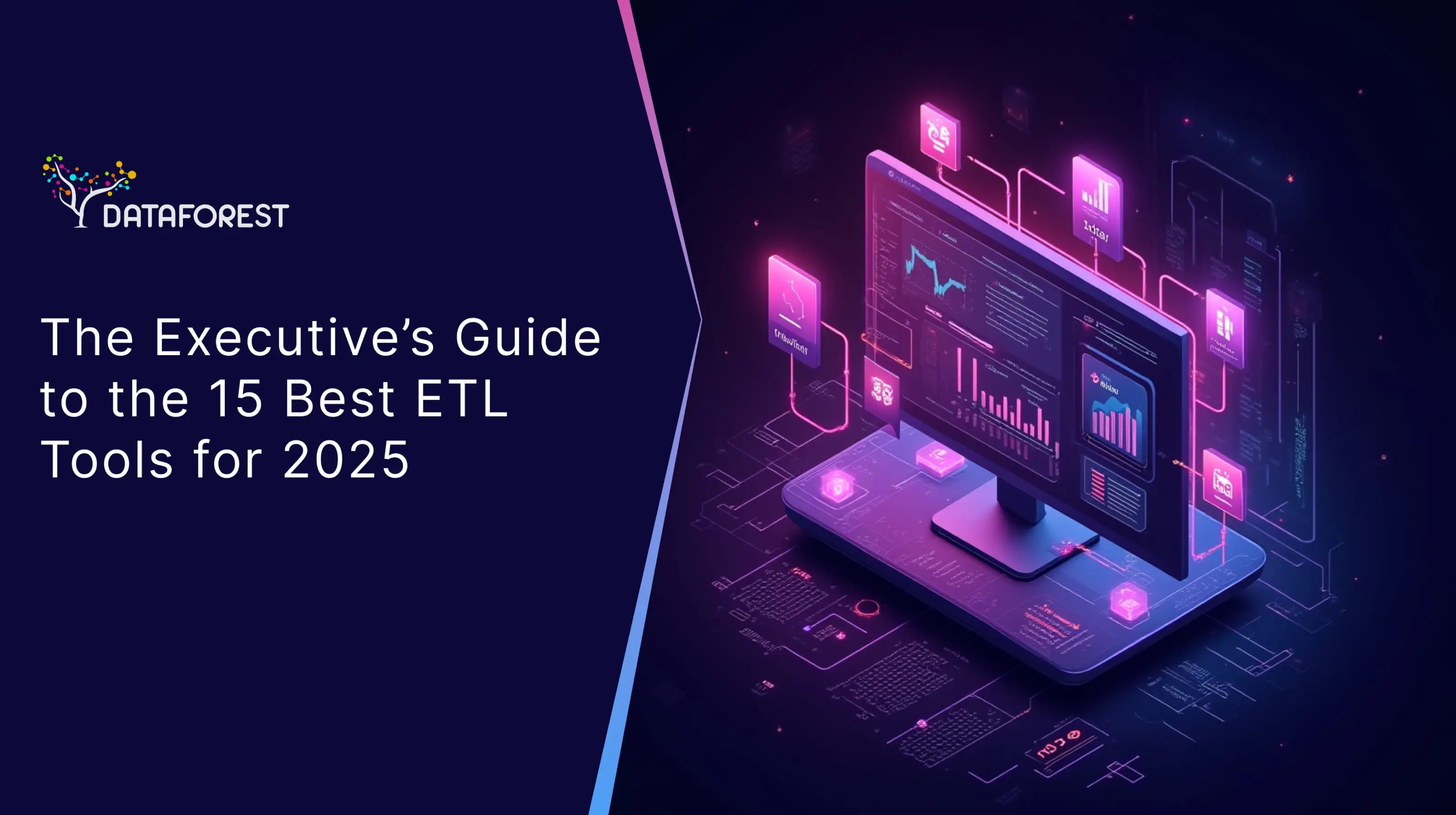



.webp)















